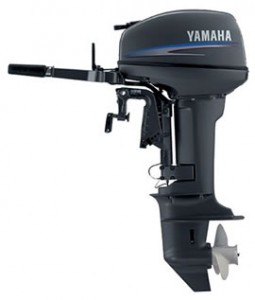How Does an Outboard Motor Work?
 Since their introduction in the early 1900s, outboard motors have revolutionized the way in which we think about boating. Prior to that, boaters and fishermen were largely dependent on the direction of wind or – for those who felt like using oars – brute force. Outboards have taken the focus of our attentions of locomotion, allowing us to think about catching fish or just enjoy the scenery.
Since their introduction in the early 1900s, outboard motors have revolutionized the way in which we think about boating. Prior to that, boaters and fishermen were largely dependent on the direction of wind or – for those who felt like using oars – brute force. Outboards have taken the focus of our attentions of locomotion, allowing us to think about catching fish or just enjoy the scenery.
Marine motors work in a deceptively simple way. Much like car engines, they generate power by burning gasoline and oxygen inside a cylinder. In the case of a boat, only one cylinder is generally used. The end result is that the engine powers a propeller submerged below the water’s surface and behind the boat. Two cycle outboard oil is applied to keep the motor properly lubricated and running smoothly.
So, it all starts in the cylinder where gasoline mixes with air, burns and creates power to move the piston back and forth. The piston rod connects to a crankshaft, which turns and causes the main driveshaft to turn as well. This long driveshaft is attached to a gearbox that converts the spinning motion into kinetic energy to move the propeller. Finally, the propeller pushes the boat through the water.

